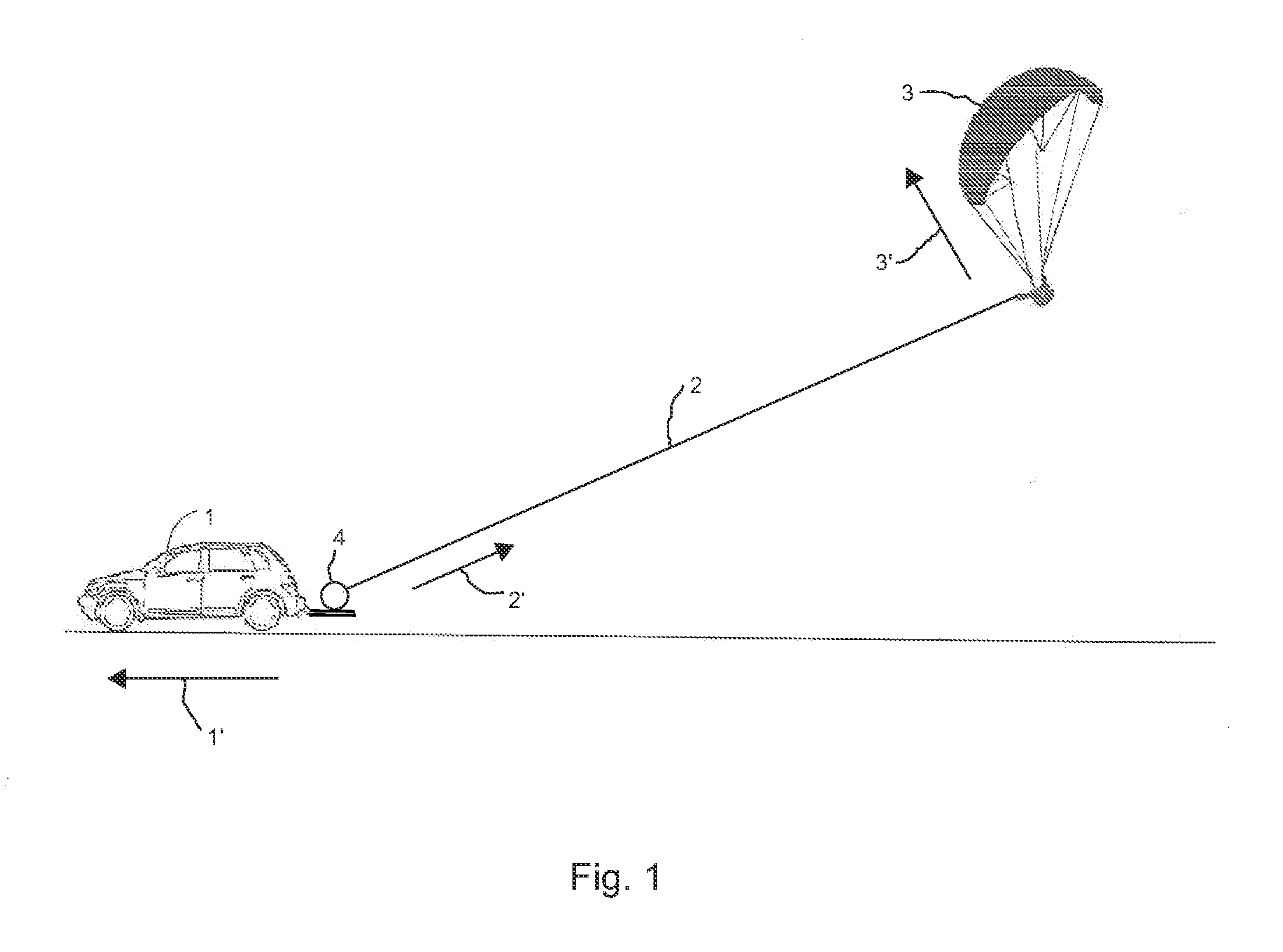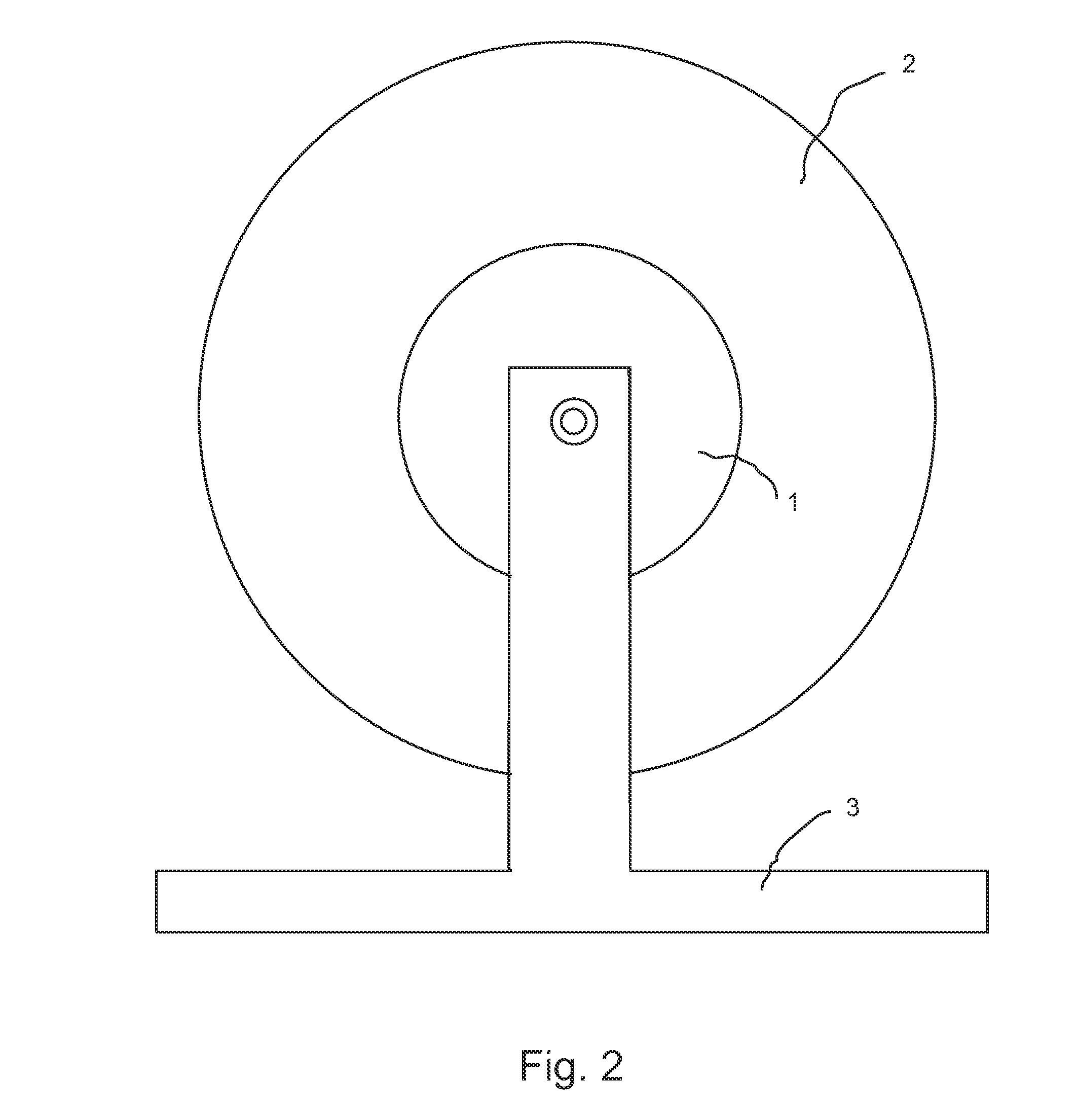Electromagnetic Tow System For Nonpowered Ultralight Aircraft
- Summary
- Abstract
- Description
- Claims
- Application Information
AI Technical Summary
Benefits of technology
Problems solved by technology
Method used
Image
Examples
Embodiment Construction
[0012]FIG. 1 illustrates a typical tow of a paraglider 3 using a payout method and employing a moving tow vehicle 1 on which the tow system 4 is mounted, with the tow line 2 being paid out during a tow. Arrow 1′ indicates the direction of the tow vehicle's motion. Arrow 2′ indicates the direction in which the tow line is paid out from the tow system 4. Arrow 3′ indicates the direction of the flight of the towed paraglider 3 during the tow.
[0013]FIG. 2 and FIG. 3 illustrate a close-up of the electromagnetic tow system itself in its preferred configuration. A DC permanent magnet hub motor 1 is mounted on a frame 3 and is connected to a power supply (not shown). The round aluminum side plates 2 comprising the winch drum are mounted directly onto the sides of the hub motor 1 to form the winch drum. The drum holds the tow line (not shown), and its side plates 2 double up as heat sinks for the hub motor 1.
[0014]FIG. 4 illustrates the electrical circuit that facilitates the operation of th...
PUM
 Login to View More
Login to View More Abstract
Description
Claims
Application Information
 Login to View More
Login to View More - R&D
- Intellectual Property
- Life Sciences
- Materials
- Tech Scout
- Unparalleled Data Quality
- Higher Quality Content
- 60% Fewer Hallucinations
Browse by: Latest US Patents, China's latest patents, Technical Efficacy Thesaurus, Application Domain, Technology Topic, Popular Technical Reports.
© 2025 PatSnap. All rights reserved.Legal|Privacy policy|Modern Slavery Act Transparency Statement|Sitemap|About US| Contact US: help@patsnap.com



